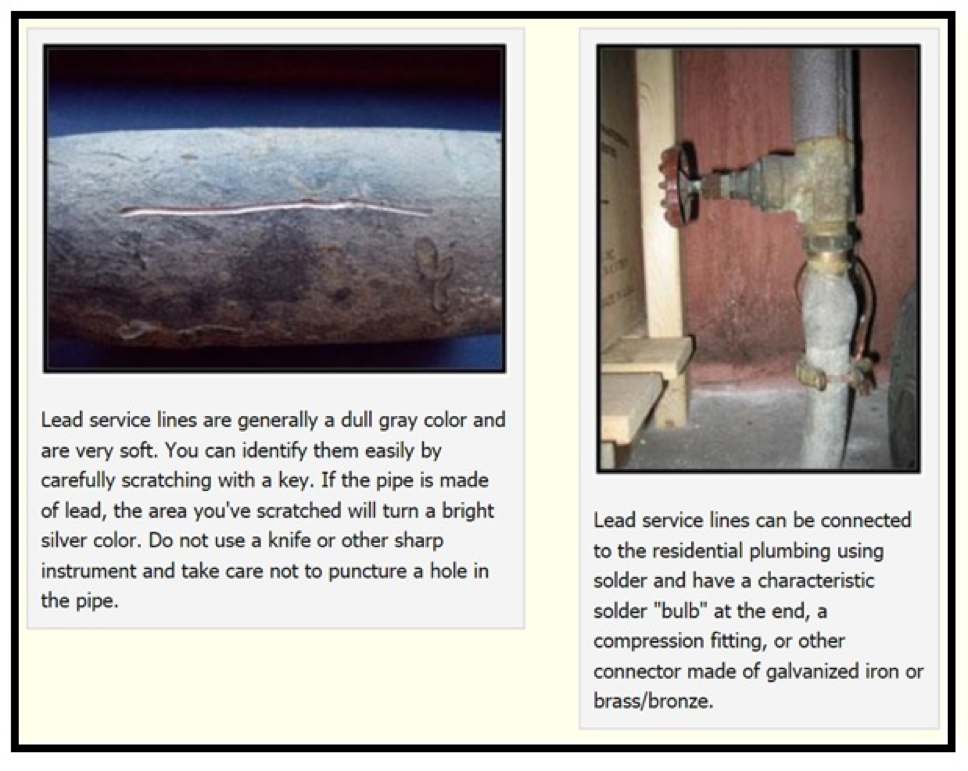Jackson’s Lead Problem Goes National
2016/04/08 – The city of Jackson is getting old and like a senior citizen with a lifetime of heavy smoking and alcohol abuse, it’s facing expensive age-related illnesses. The most obvious, outside of the numerous car-eating-size potholes found in some areas, is the recent news of lead-tainted water.
The Mississippi Department of Environmental Quality discovered last June that 22 percent of homes in Jackson contained water that exceeded the dangerous level of 15 parts per billion. Mississippi officials didn’t notify the City of Jackson of the results until January, however, and it was only this February that the state issued a warning for pregnant women and small children.
Lead lingers in the bones and can get released into the physiology of a developing fetus and into a mother’s breast milk after birth, according to the EPA, causing brain damage, low IQ, and anemia in infants, among other problems.
Thankfully, a follow-up sampling of 101 homes in January and February of this year revealed just 11 percent of homes were above the federal lead limit, but it should be noted that the number is liable to fluctuate and remains a concern for residents.
The problem comes down to money and circumstance. The EPA only started regulating lead in tap water in 1991 in the wake of numerous health studies that linked lead in drinking water to cases of severely elevated blood lead. Prior to that, almost every city in the country had spent the last 70 or so years happily installing water pipes made of cast iron, but with lead joints to prevent leakage.
Aside from being an insidious neurotoxin, lead is malleable and has a low melting point. It also tends to bend before it breaks, and — up until the federal government wisely halted its use — the heavy metal made a wonderful plug for joints and bends in high-pressure water pipes.
Unlike most contaminants, lead doesn’t naturally occur in an untainted water supply and, therefore, doesn’t usually follow the water out of its source, be it a well, lake, or river. In fact, it usually gets into your baby’s bottle only after it leaves the city’s water treatment plant, often through cast iron pipes with lead joints.
Cities all over the country know about their lead joints, but they’ve worked to keep lead particulates out of your water with a mineral coating they put inside your pipes through chemical additives in the water. Usually this tactic works so well that the issue only shows its face when water treatment changes back at the water plant chemically melt the mineral coating in your pipes, leeching lead into your water. That was the case in Flint, Michigan, where the governor’s administration ordered the city to save money by changing its water source from Lake Huron to the Flint River, which contained enough toxic and corrosive elements to obliterate the mineral coating inside Flint’s pipes.
Unlike Flint, the city of Jackson has been using the Pearl River as its source for decades, but Jackson Public Works Director Kishia Powell admitted that the city, like many others, was originally built with cast iron water pipes that contain lead joints.
The Mississippi State Department of Health (MSDH) warns that even though the majority of home lead tests in Jackson revealed no lead, or lead below EPA warning levels, its special precaution toward homes with pregnant women or young children remains intact for “at least six months while the city of Jackson makes the necessary changes required to stabilize the pH levels in its water system that contribute to corrosion.”
The agency also demanded the city submit to a compliance plan, forcing the municipality to hire an engineering service to handle its water issues, as well as submit a corrosion control plan and create a map of lead-affected homes, among other requirements.
Last month, the city council refused to accept a $400,000 contract proposed by Mayor Tony Yarber with Trilogy Engineering Inc., after council members realized that Houston, Texas founder Thessalonian LeBlanc held an unreported campaign fundraiser for the mayor in 2014. Council members accused the mayor of cronyism and criticized LeBlanc’s education, pointing out that she received her degree through an online college.
While the city does battle with the lead issues on its end, homeowners are left to deal with the lead that pipes in their own homes may be dosing them with, because lead doesn’t have to leech into your water lines through city-owned pipes. In February, Powell described the lead contamination issue as a “home-dependent event,” and though her statement has an element of blame passing, there may actually be some truth to it.
“Water chemistry is reacting with lead-based plumbing. The control that we do have is to treat the water to a point where we have as little reaction across the city as possible and that’s the point that we’re trying to get to,” Powell said.
If your own home is older than 30 years (as many Jackson homes are), you may have lead water service lines leading into your house from the ground level. Look for telltale solder “bulbs” just beneath the shut-off valve on your water’s main line. You can also perform your own test on the pipes by lightly scratching pipes in your house. Lead is a soft metal and will scratch easily.
https://www.epa.gov/il/advice-chicago-residents-about-lead-drinking-water
While individual residents are left to replace their pipes as personal finance allows or to rely on city employees to get the water chemistry correct, replacing miles of long-buried city pipes is even more difficult, particularly in a city facing insurmountable infrastructure costs already. In 2012, the City of Jackson had to submit to an expensive Clean Water Act settlement with the U.S. Environmental Protection Agency, the Department of Justice, and the Mississippi Department of Environmental Quality (MDEQ) because of unauthorized overflows of raw, untreated sewage spilling into the Pearl River from the city’s wastewater treatment plant in south Jackson. In addition to catching national attention, the consent decree required Jackson to pay a civil penalty of $437,916 and implement a supplemental environmental project valued at $875,000. This does not include the costs of making the necessary upgrades to the city’s aging sewer plant (which caused the headache in the first place), and that cost could easily reach into the millions.
To make matters worse, credit rating company Moody’s Investors Service imposed a four-level reduction of the city’s bond rating last December because of falling revenues as parasite communities in Madison and Rankin counties continue to siphon off Jackson residents and businesses. Moody’s points out that city reserves plummeted 60 percent in fiscal year 2015, and it expects another plummet in 2016, even as the city faces a $1 billion bill to repair and fill potholes and replace water and sewers lines.
Jackson is not alone in its suffering, however. The American Society of Civil Engineers (ASCE) estimates that there are more than one million miles of water mains in the United States, and it rates them all at a dismal “D+” on its 2013 report card on U.S. infrastructure.
“At the dawn of the 21st century, much of our drinking water infrastructure is nearing the end of its useful life,” the report claims. “There are an estimated 240,000 water main breaks per year in the United States. Assuming every pipe would need to be replaced, the cost over the coming decades could reach more than $1 trillion.”
ASCE points out that capital spending hasn’t kept pace with water infrastructure needs and that a trend toward state and local governments assuming the bulk of the investment requirements in the coming decades will continue, with local governments paying an increasing share of the costs.
“In 2008, state and local governments estimated their total expenditures at $93 billion annually for wastewater and drinking water infrastructure. Congressional appropriations have declined over the five-year period 2008 to 2012, totaling only $6.9 billion — an average of $1.38 billion annually or $27.6 billion over 20 years, 8% of EPA’s identified needs over 20 years,” ASCE’s report claims.
The organization warned that failing to meet the investment needs of the next 20 years could actually reverse any environmental, public health, and economic gains of the last three decades.
Ward 4 Councilman De’Keither Stamps said he is optimistic that the trend will reverse, at least a little, and that the city will be able to reach out to the state of Mississippi to help offset the capital city’s failing infrastructure. He said lobbyists representing the city are currently working with legislators and making them aware of the serious issues facing the city.
“Those conversations have been happening and hopefully we’ll see the fruits of them when the legislative session is over,” Stamps said.
Source: MS NAACP




